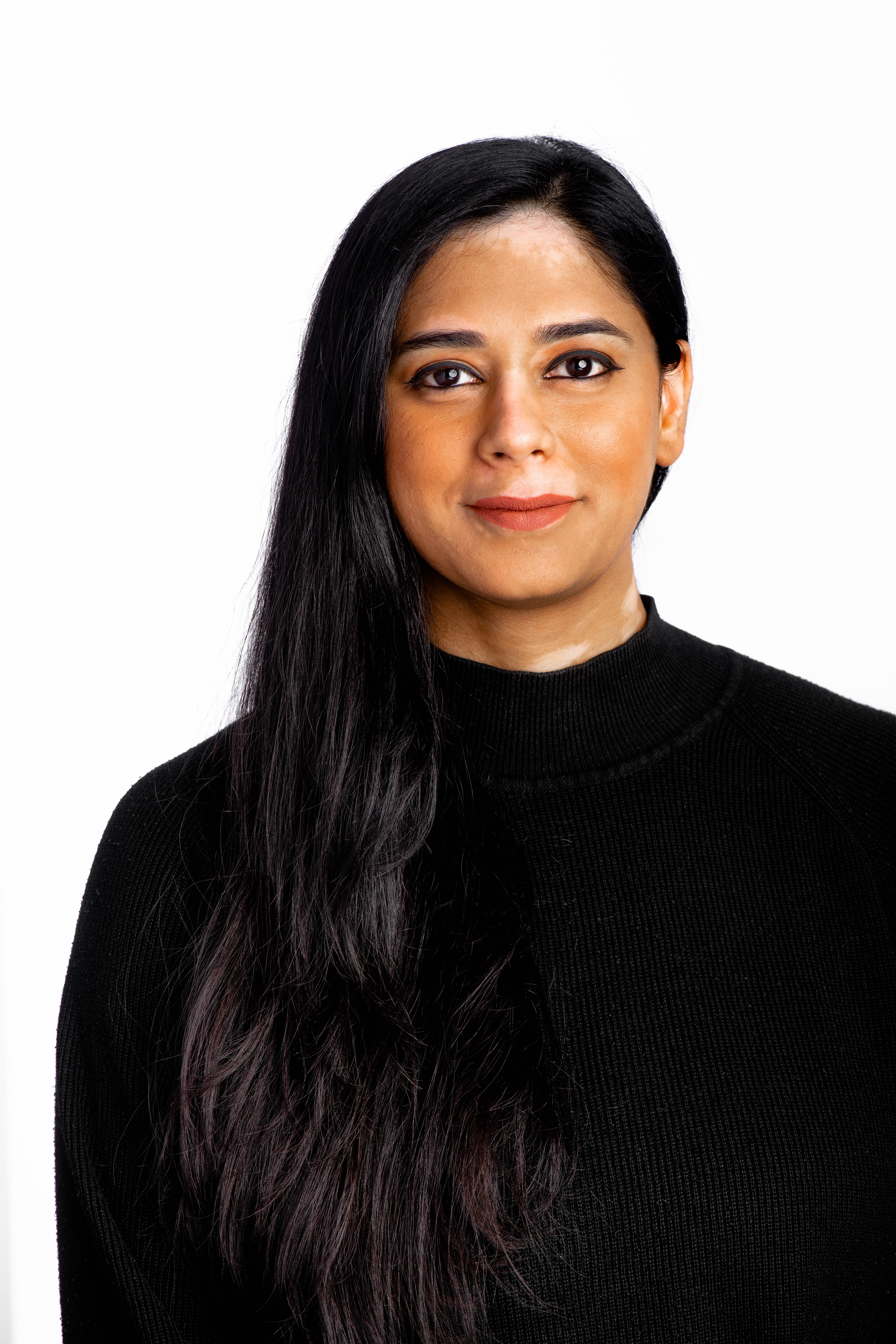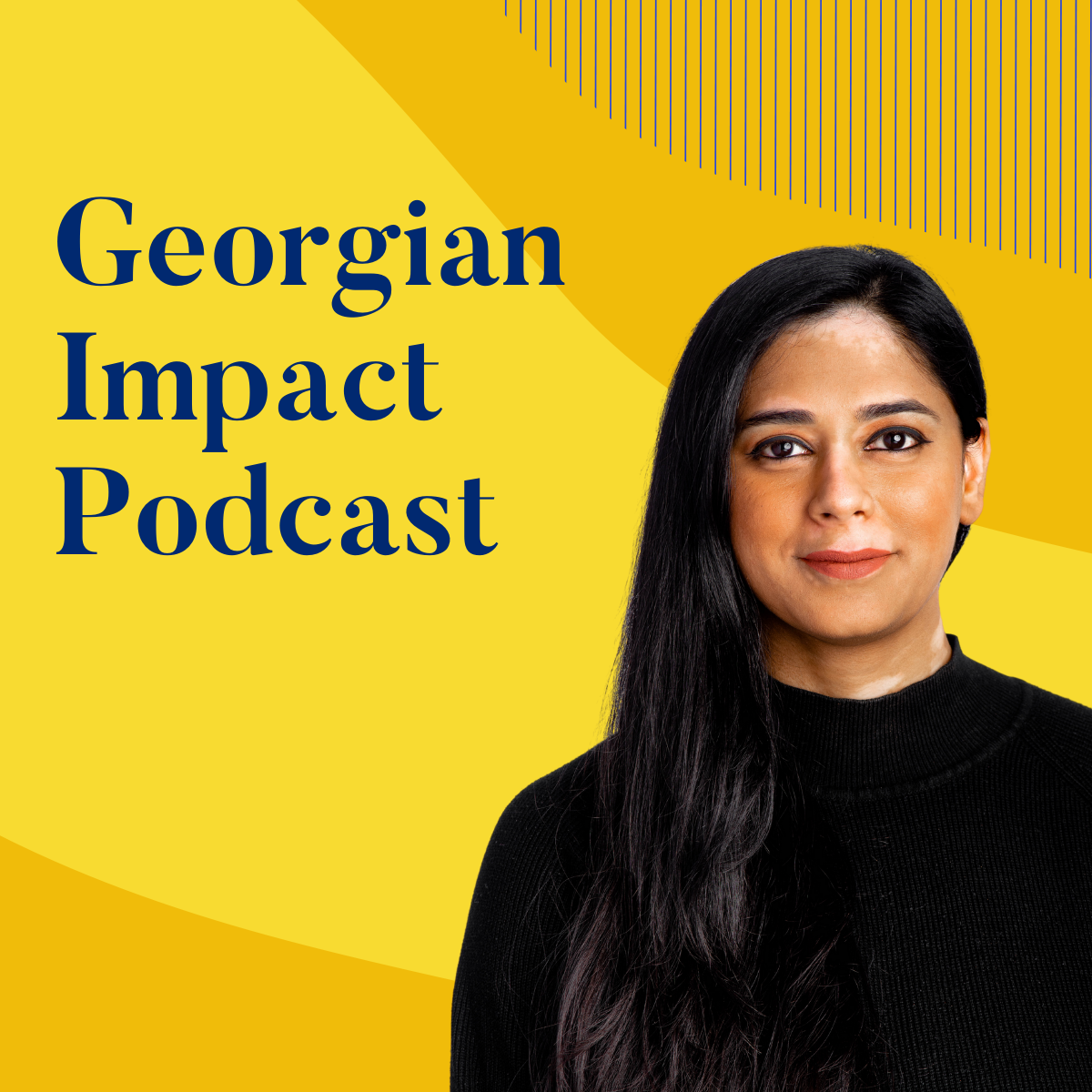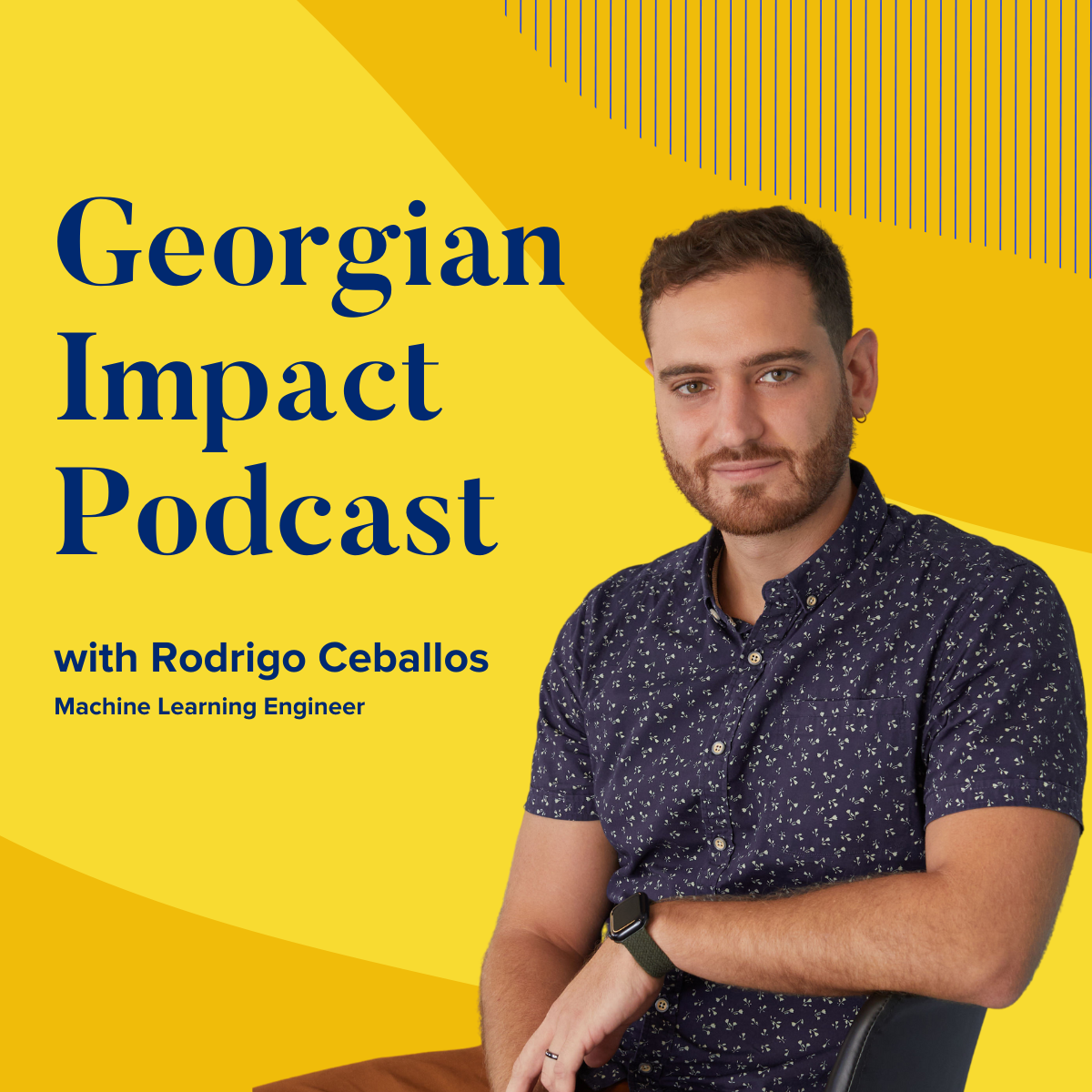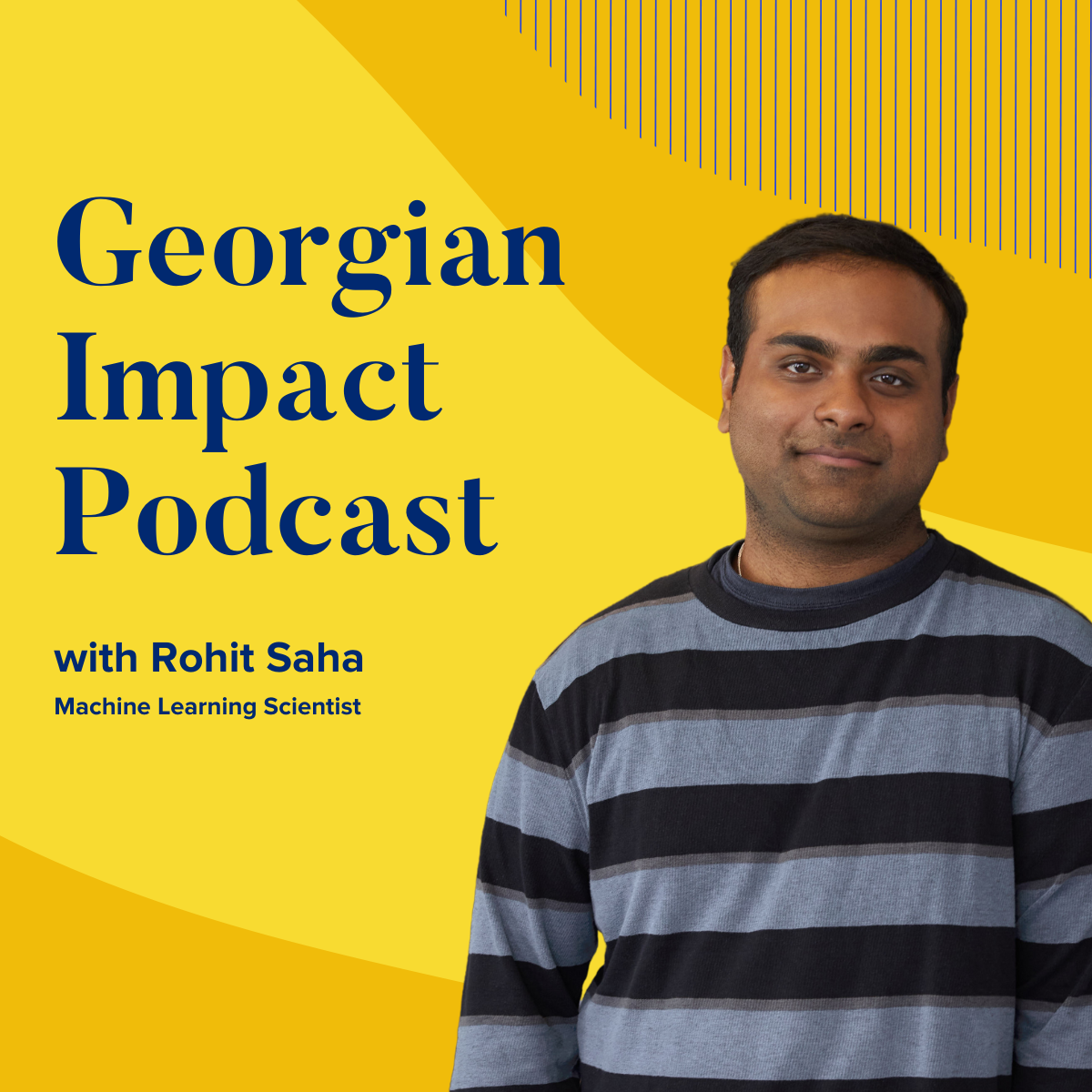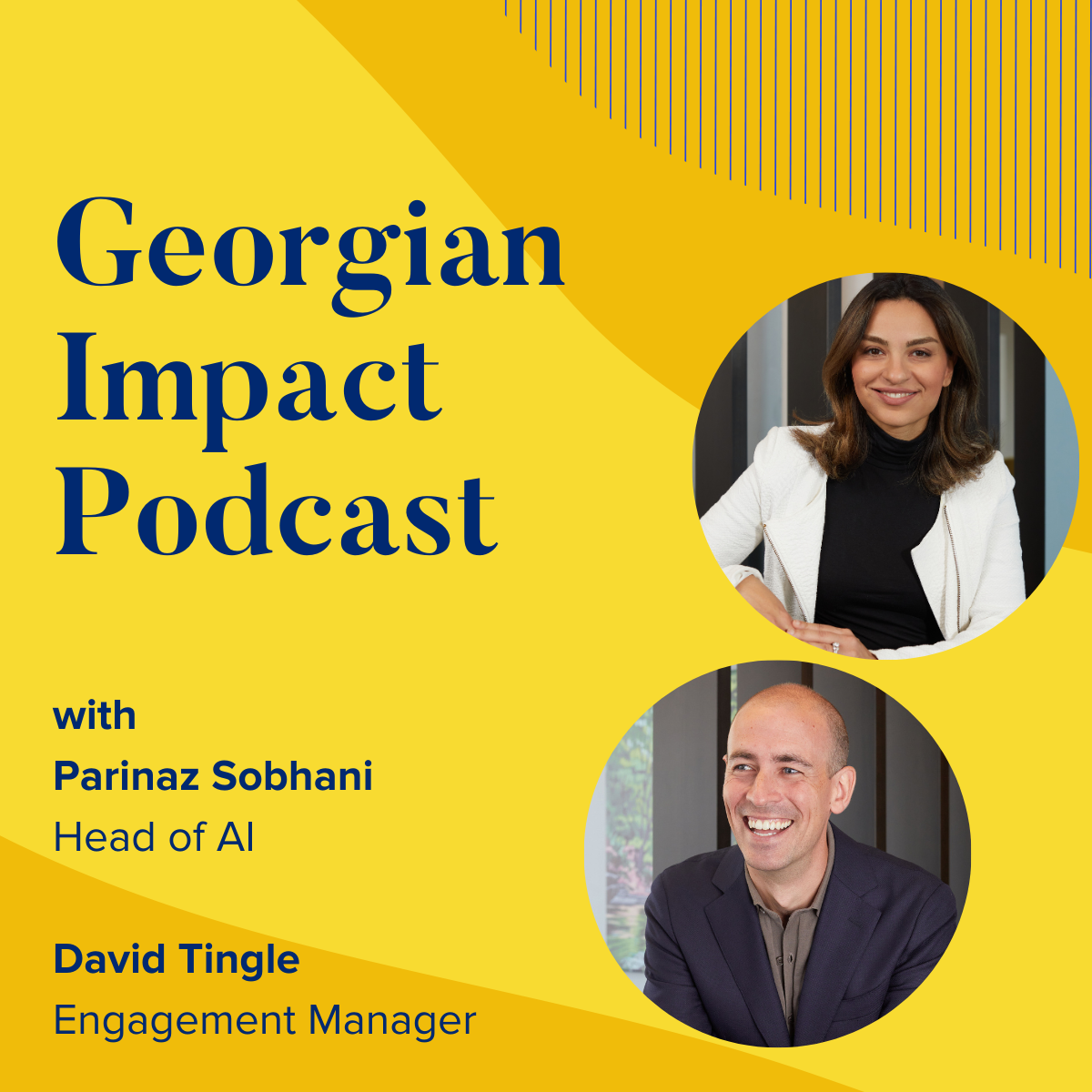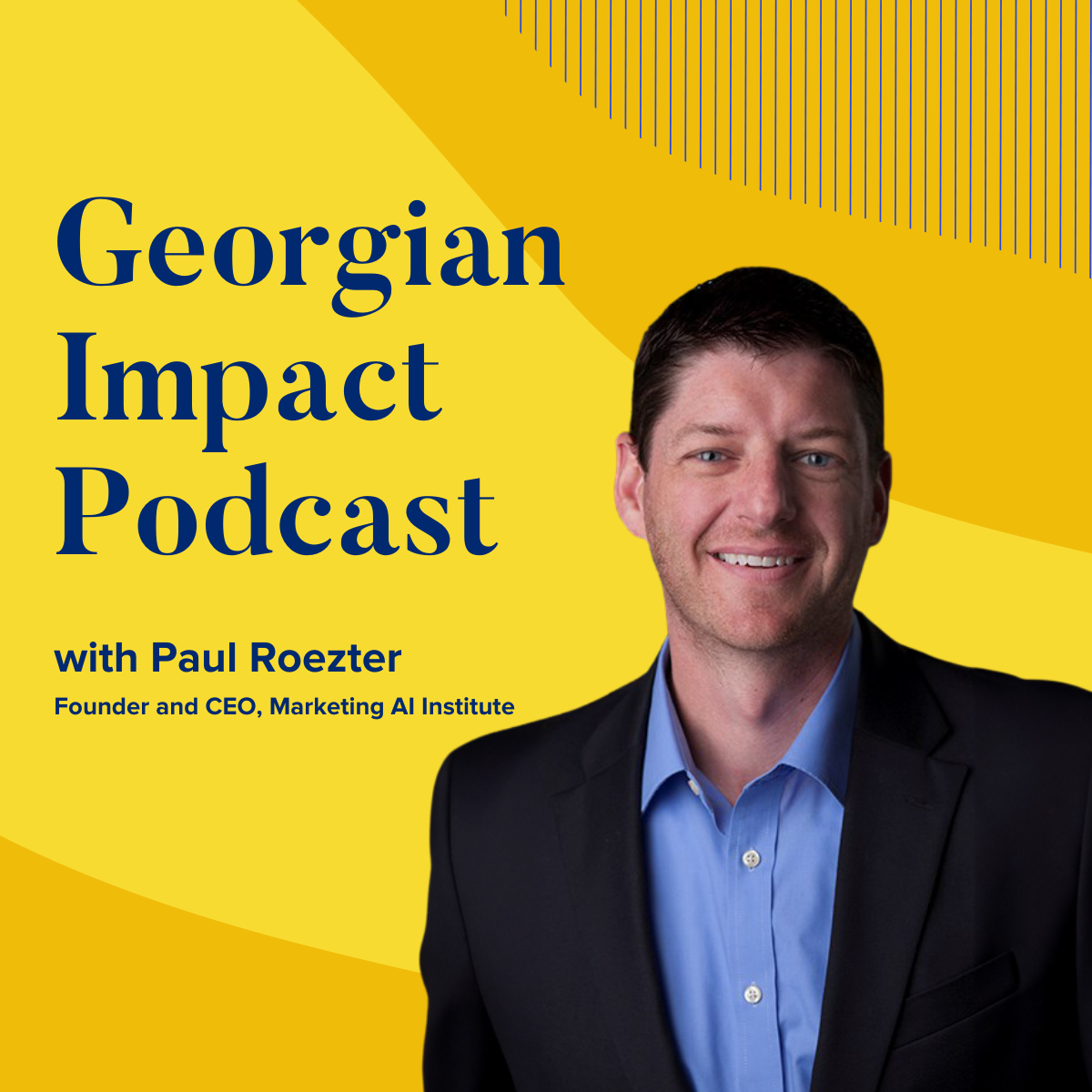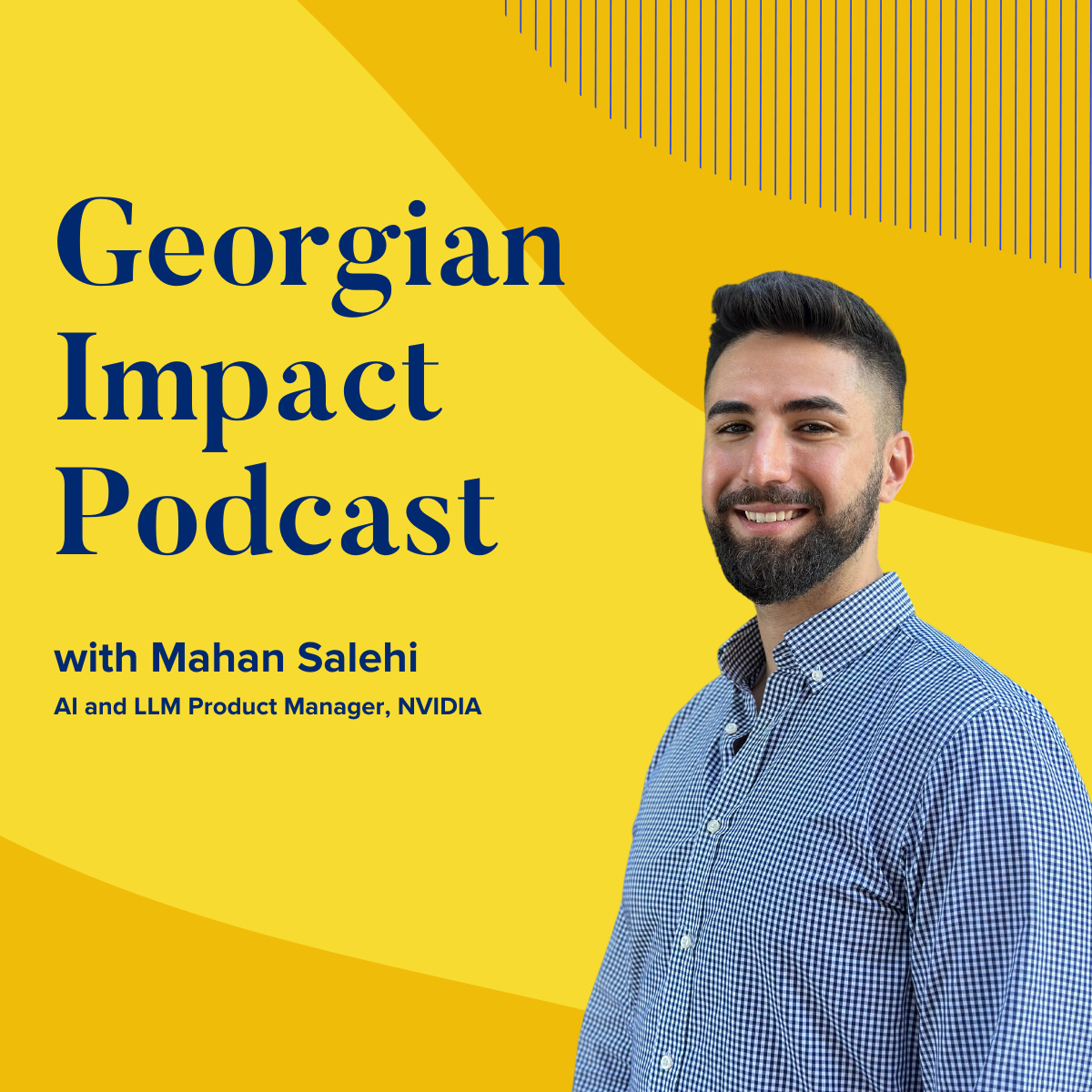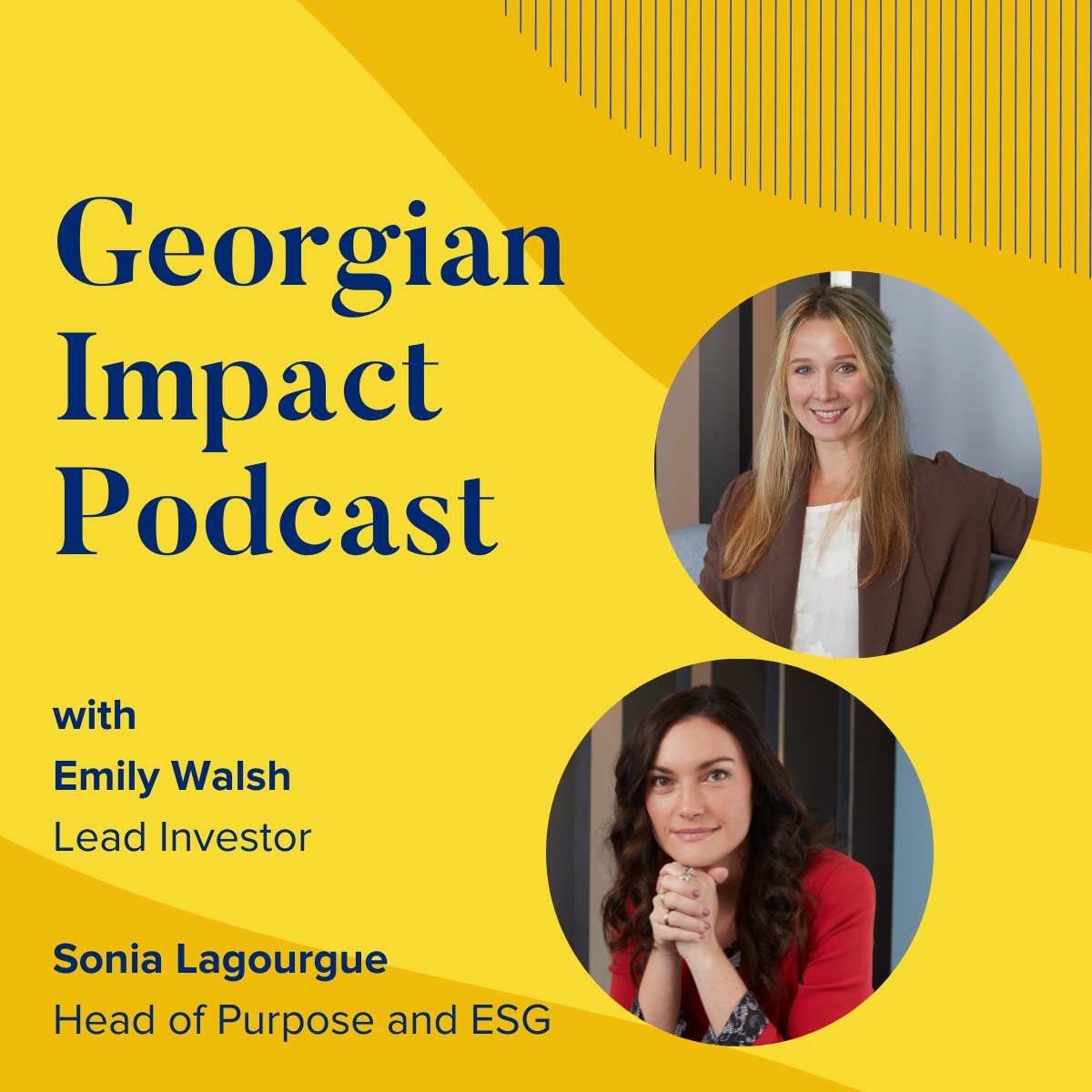Why Inclusive Design Builds Better Products With Fable’s Alwar Pillai
- 0.5
- 1
- 1.25
- 1.5
- 1.75
- 2
Jon Prial: While the old tech adage goes that innovators should move fast and break things, moving fast could mean that you're not considering all factors. And it could mean that you're leaving some of your users behind. In the past decades, we've seen how accessibility makes experiences safer and more user friendly. In the physical world, cut curbs and ramps initially implemented for people with wheelchairs turned out to be beneficial for people pushing strollers, rolling carts, pedestrians, just to name a few. We've worked to translate this progress into the digital world. Text- to- speech helps those with hearing disabilities, labeling images helps those with visual disabilities. But as our guest today will highlight, there's more we can do to be proactive about accessibility and inclusive design. Today's podcast is not about small technical implementations. It's about understanding issues and recognizing the greater good that can be found for both a company and its customers. Accessible design is good design for everyone. Alwar Pillai, the CEO of Fable is here to tell us why and how her company is trying to be part of the solution. I'm John Pryle and welcome to Georgia's Impact Podcast. Just to start Alwar, can you tell us a bit about your story and your journey into accessible design?
Speaker 2: Hi, everyone. I'm Alwar, I'm the co- founder and CEO of Fable, a little background about me and why I decided to start Fable and why I've decided to choose this problem to solve specifically. So I'm born and raised in India. I've been deeply passionate about design for quite some time. I've done my undergrad in UX, and then I moved to Toronto in 2015 to do my masters in inclusive design. And that's the program that shifted my thinking completely. So it made me recognize my own biases as a designer and how I have created designs that excluded users. And through that program, I was introduced to the world of digital accessibility and how the challenges that people with disabilities face when they're interacting online and how that overlaps with a lot of other communities, like even people who are aging and how technology can get harder as they age. And I worked in the industry for some time, I worked with the provincial government here in Canada, in Ontario, and then I also worked in big telco, helping them implement an accessibility practice. And what stood out to me was everyone was working on accessibility, but no one with disability was in the room. So everyone was just making assumptions on what an accessible experience is, but not really understanding what users need. And so decided to stop preaching about accessibility, but quit my job and started Fable to really help companies build accessible products by integrating the voices of people with disabilities throughout the product development process.
Jon Prial: That's tremendous. Now, from a founder's perspective, you and your co- founder, neither of you are disabled. Is that correct?
Speaker 2: That is correct. I like to say that we are currently not disabled because I think everyone experiences disability in their life at some point of time or the other, whether that's permanent, temporary or situational. I think there are some disability advocates who also will not say the word able- bodied. So they say," Yeah, you are non- disabled right now." So that's how I would refer.
Jon Prial: Interesting. So referring back to my introduction, what do you think it takes to take this analog thinking about accessibility inclusivity and make that work in a digital world?
Speaker 2: First, we need to recognize how much has digital transformed our lives. And even if you look at COVID, the world has continued to operate because of everything that we have right now. We've been able to work remotely, we've been able to access entertainment, access healthcare, access education. Like any vertical you say, everyone has a digital presence and what it's highlighted as well. And this is why accessible design and inclusive design exists is that all these amazing things that are available digitally is not available to people with disabilities. And the reason for that is the way we build products is broken. We just need to change that. We need to stop addressing product design and product development from the lens of... Let's try to create experiences that capture the widest experience, like the most number of people. Let's try to address for the 80%. Instead, at Fable, we encourage... Is think about that 20%. Think about the people who actually find it the most challenging and the people at the edges. Because when you design products that someone who is blind has to use, someone who has limited mobility, someone who is aging and has tremors. You suddenly are creating a product that is adaptable, more personable, more usable and more customizable, which in turn makes a product more accessible to everyone. So that's the biggest shifting that needs to happen when we address digital products and how we approach digital product development.
Jon Prial: And you mentioned 80/ 20. I'm just curious, that's more of a generic statement. What percentage of folks are probably across the range of disabilities. Is it 20 or is it more?
Speaker 2: So 15% of the world population lives with a disability. Currently they are over... I think the latest stat was over 1. 5 billion people who live with a disability. Each country, it varies. But the point is that it's not about only considering it because you're designing for a disability, you are actually considering it because you are ultimately making better usable products for everyone.
Jon Prial: It's interesting you mentioned that you were recognizing your own biases when you're thinking from UX perspective. And I find that's such an interesting challenge to overcome. We often hear about overcoming biases when people are creating a data set. And that when the... Forgive me, when the five white males are writing some AI algorithms, this is what they end up with, and they're missing an opportunity. And I hadn't really thought about it in terms of the UX perspective. Can you talk a little more about that? I find that really interesting.
Speaker 2: When I learned UX design and was exposed to UX and UI and also was trying to practice it, so much of the attention was to the visual design and the visual experience. And what we don't realize is that not everyone consumes information in a visual format. Everyone consumes information in different formats based on what they're doing. And that's what accessibility really highlighted for me. And so if you think about some of the ways you consume information, you might be... Sometimes you read your email, sometimes you listen to your email, sometimes you listen to podcasts and sometimes you read the script of the podcast. There's different options that we have but as designers, we tend to just focus on that visual element. And I think that was the biggest learning for me was like, if you take the visual context, are people consuming the information and is the product still as usable? And if it's not, then why not? And so really forcing ourselves to think about all the different modalities, not just touch and viewing and getting out of that mindset.
Jon Prial: It wasn't till I... Listening to you, I really hadn't thought about it. But yes, in my car, my text messages are read to me. Don't even think about it, but absolutely they're now read to me, I'll dictate responses probably. Well, hopefully not too often, but I'll dictate responses. The other thing that this is a visual thought and affects people that are hearing impaired, is I'm now watching more things on television with subtitles. And not only am I not catching the words I was missing, but they might say the name of a character that," I didn't know that character's name." Or they'll put the name of the song that's being played. There's a richness of information being communicated to me now. It's almost the benefit of a cut curb helping me with my shopping cart. The benefits are significantly broader than just a small subset of the population.
Speaker 2: Exactly. And if you think about a lot of the products all of us use, technology and features that were designed for people with disability first in our daily life. So even what you just said, the fact that you listen to your email sometimes. That is translating text to speech that was designed for people with limited mobility being able to just listen. And so the very common other example that I like to say is like an electric toothbrush. All of us at some point of time have used an electric toothbrush, some of us still use an electric toothbrush. But it was designed for people with limited mobility. So really understanding that by creating those different modalities, everyone benefits from it. Even the example of captions, designed for people who are hard of hearing is now used for... If you're watching something in a different language, subtitles help there as well. If you're learning a new language it helps there. Or you might be in a train and you're in a public space and you still want to consume the information, you can just have those captions on and get it. So it just gives the opportunity to the user to pick how they want to interact with your product.
Jon Prial: Yeah. And you mentioned tremors, and I know there are some aspects on touch pads to let the click... What does it take to click on something? And I hadn't thought about the programmability of the clicking other than just being convenient, but no, it actually becomes a necessity. And I hadn't thought about that as well. And I hadn't thought about what the invention of the electric toothbrush... Where it came from. Once again, a single invention done for a small subset turns out benefiting a much larger audience. Now, clearly this is a mindset, so let's step back a little bit. And as companies and developers have to build inclusivity into their design, let's talk about approaching this holistically versus having a set of check boxes. Because just listening to you, I have far more check boxes than I thought I had before. So how do they begin to approach it? How do you get your customers to think about this a little bit?
Speaker 2: Yeah. And I really like that you called out it is that mindset shift. The way we like to frame it is, we are changing behavior and we are making product teams think about how they build products differently, because that's where it needs to start. And so instead of thinking about this from a checklist, the way you move it is you actually evaluate how are we building products right now? What is our product development process? And what Fable does is we help companies really practice inclusive product development. And that means that every stage of product development should involve getting the insights from people at the margins, people with disabilities. So that at every stage a designer, researcher, developer, QA, whoever's involved is making more informed decisions. Because ultimately as much as you might want to put this in the bucket of," This is UX, this is design, this is not development. Or this is not my responsibility." Every person who touches the product development process influences the user experience for the end user. And everyone should know the role they play in dictating who gets to take part and who gets to access their product. And so at Fable, we really try to break it down to, if you're a researcher, what should you be considering? When should you be collecting feedback? How you should be interacting with people with disabilities who use assistive technologies. And then when you're a designer, how do you test prototypes? How do you validate some of the assumptions you made? And then very similarly at those later stages of development, like once you've built a product, there might be things you didn't consider that's not working as expected. It is an iterative process and I think the biggest shift that needs to happen is where companies think that accessibility has an endpoint. And it's like," I can be accessible and then I don't have to think about this for a while." Every company is constantly improving their product. There are improvements being made every day, every couple of hours sometimes. And we need to start really thinking about accessibility at a very similar lens to security. There is no like," You are fully secure and locked in." You have to constantly invest in it and maintaining it. And I think that's where we're trying to help companies come around of like," Let's start practicing inclusive product development." And you'll always be focused on making improvements and start reaching this endpoint.
Jon Prial: I love the thought and I love the comparison to getting security right. And it's not something that you build after the fact, it's not something you patch later. You'll never get it right. But in my naivete, I was thinking," Okay, we'll just get it done early." But no, it's not just get it done early, it's get it done early and iterate and keep looking at it. And then hopefully find the huge value, you actually could easily differentiate yourself from your competitors if you get something really right. And have the... I hate to use cut curb, electric toothbrush. It's what I was going to ask, but I'm not going to ask now, which was the desired end state, because there is no desired end state, it's going to continually... Every product changes, every product has new releases, so we're going to leave that. Can you give a couple of cool case studies perhaps?
Speaker 2: So our customers subscribe... We have two products in the market, one is Fable Engage and one is Fable Upskill. Fable Engage is a research and testing platform where companies can get quick feedback from people with disabilities who use assistive technologies throughout the product development process. So typically when customers get access to our platform, there is a little bit of nervousness because you never tested your product with someone with a disability before. And so you actually don't know what the state is. And often our customers would think of the worst. It's like," We were never considered so it has to be a bad experience." And what we tend to see is when we have a researcher, designer or a developer, when they have their first user interview with an assistive technology user, they have what we call an aha moment. And that's the moment where for the first time they have seen someone use a product that they built and struggled to use it. And for them it's like," What? Why is this so challenging?" And they suddenly feel a sense of ownership and responsibility and they also understand that this is not hard to do. The challenges that the end user is facing is easily addressable. So it's that moment of like," Wow, this is a painful experience. But also actually, I can influence this and correct this and make the experience better." And so we see a lot of those aha moments happening on our platform every single day. And we think that's what's going to cause that behavior change, that mind shift change that you were talking about. Because suddenly it becomes something that is actionable, easier to relate and you know exactly where their issues are and you can focus on addressing them.
Jon Prial: That's tremendous. And across those two offerings, what's your percentage of tech automated versus where you really need to do more hands on consulting?
Speaker 2: We don't do hands on consulting. Both our products are subscription products. With Fable Engage, it's a subscription for customers. And then we have a community of people with disabilities who support the request that comes in on demand. And so we provide flexible working opportunities to people with disabilities, specifically for the skillsets they are expertise at. They use their assisted technology every single day, they know exactly how they want products to interact with it. And they are the ones in the best position to recommend insights to our customers. So no, we're not an automated solution. We think the human element is what's essential here because that's what's going to contribute to that behavior change.
Jon Prial: Following up on that. You're not a large company though, you're growing. Your customers are large customers. How do you do that? How do you reach them?
Speaker 2: Yeah. So for us, Fable, we started four years ago. We've had amazing traction and amazing growth in the last little while. And it's very rare that companies can say that their early adopters are the most innovative companies in the world. Our customers include Meta, Shopify, Slack, Walmart, Microsoft. And so we support enterprises, that is our target market. And the reason we support enterprises is because our mission is to empower people with disabilities to participate, contribute and shape society. And so for us to have the biggest impact, we have to work with the biggest companies out there that have the biggest footprint. Like Meta, I think has like three billion users. Microsoft has one billion users. Slack has 10 million active users daily. So if we are helping these companies make parts of their products accessible over time, we are literally unlocking digital access to the one billion people who live with disabilities. And so to answer your question, how are we working with some of these companies? These companies are understanding that investing in an inclusive product development is not just like the right thing, the good thing to do. They see the huge opportunity and they see the user bases they should be catering to, and they see that as an innovative opportunity. So it's been great that we've been able to attract a lot of these companies. Most of our attraction has been inbound. We've been really trying to educate the market around the value of inclusive product development and I think it's starting to resonate a lot with a lot of companies.
Jon Prial: Do you have any exciting company developments to share?
Speaker 2: Fable just recently closed our series A financing round. We raised$ 10. 5 million USD and we are basically going to focus this funding on helping two main parts of our company. One is our customers. We want to make sure we are introducing more enterprise product features to make it more easier for you to practice inclusive product development. And then our second core part of our company is our community. As part of investing in our growth, we want to make sure we continue to invest in our community. So we recently launched Fable Pathways, which is a skilled development program that's created by people with disabilities for people with disabilities. And one of our first partners is Microsoft. And so we are going to be really helping people with disabilities learn how to use the Microsoft tool set. So this is going to be extremely contextual learning. And we're hoping through unlocking access to learning that we eventually are unlocking access to employment.
Jon Prial: What a fantastic story. From my audience here, we've talked a lot about security, getting it right. The downstream benefits are huge and we've got to add accessibility to your list of things that are critical that you got to get right and you got to get it right early. Alwar, thanks so much for taking the time to be with us, this was a pleasure.
Speaker 2: Awesome. Thank you-
DESCRIPTION
The old tech adage goes that you should move fast and break things, but moving fast could mean you could be leaving some of your users behind. According to our guest, the way we do design today is “broken.”
On this episode of the Georgian Impact Podcast, we talk to Alwar Pillai, the CEO of Fable, a leading accessibility platform powered by people with disabilities. While many companies focus on trying to build for at least 80% of people, Alwar says, trying to build for people at the margins can lead to better design.
“You suddenly are creating a product that is adaptable, more personable, more usable, and more customizable, which in turn makes the products accessible to everyone.”
In our podcast, she talks about how companies can avoid just “checking a box” and actually get proactive about inclusive design.
What you'll hear about:
- Alwar’s journey into accessible design
- Why inclusive design builds better products
- Overcoming biases in UX design
- The mindset and approach needed to build inclusivity into design
- Case studies from Fable
- How Fable works with enterprise clients
- What Fable is doing with its Series A
Today's Host
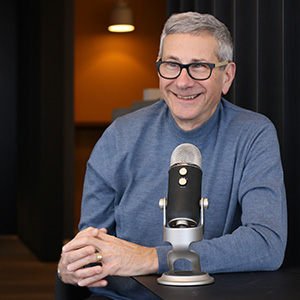
Jon Prial
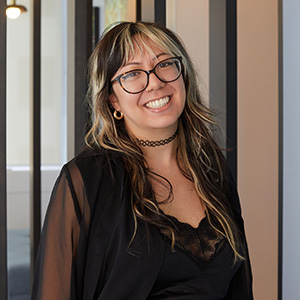
Jessica Galang
Today's Guests
